Korean Cleansing Manufacturing: Dr.Schracl's 3-Strategy Fermentation System
BeauticsLab
October 24, 2025
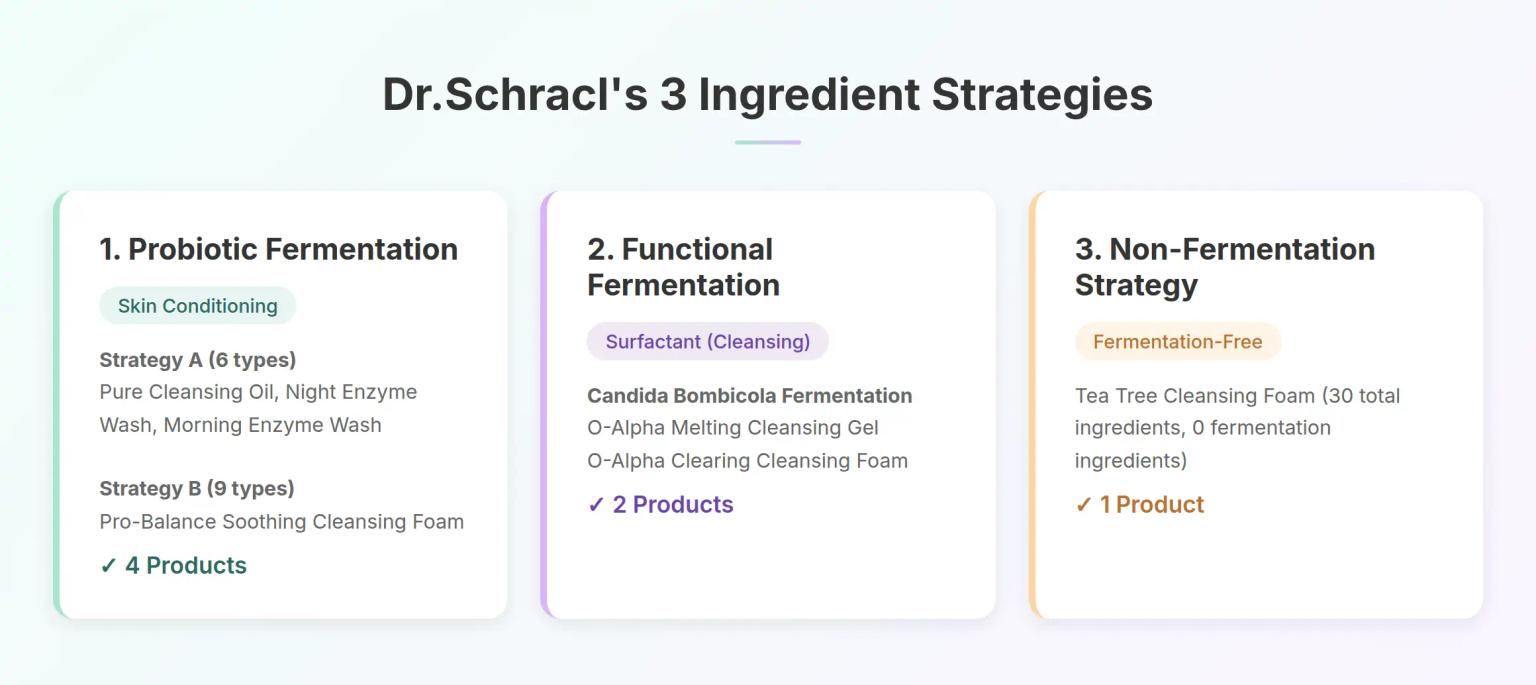
Table of Contents
Fermentation-Specialized Brand in Korean Cleansing Market🔗
In Olive Young's cleansing category, Dr.Schracl sells 7 products. Manufactured by KolmarKorea Co., Ltd. and Cosmax Co., Ltd., distributed by Ezihan Cosmetics Co., Ltd.
This analysis is based on October 2025 Olive Young cleansing category data. We analyzed ingredient formulations across Dr.Schracl's cleansing product portfolio.
Analysis Scope:
- Dr.Schracl brand cleansing products (7 types, Week 42, 2025)
- Manufacturers: KolmarKorea, Cosmax
- Distributor: Ezihan Cosmetics
- 3 ingredient strategies by purpose (Probiotics · Functional Fermentation · Non-Ferment)
Dr.Schracl's Cleansing Product Portfolio🔗
| Product Name | Format | Total Ingredients | Ferment Ingredients |
|---|---|---|---|
| Pure Cleansing Oil | Oil | 28 types | 6 types |
| O-Alpha Melting Cleansing Gel | Gel-to-Oil | 37 types | 1 type |
| Pro-Balance Soothing Cleansing Foam | Foam | 36 types | 9 types |
| O-Alpha Clearing Cleansing Foam | Foam | 44 types | 1 type |
| Tea Tree Cleansing Foam | Foam | 30 types | 0 type |
| Night Enzyme Wash | Powder | 26 types | 6 types |
| Morning Enzyme Wash | Powder | 28 types | 6 types |
6 out of 7 products (85.7%) contain fermentation ingredients.
Dr.Schracl categorizes products by purpose: probiotic fermentation (skin conditioning), surfactant fermentation (cleansing), and non-ferment line.

1. Probiotic Fermentation Ingredient Strategy🔗
Strategy A: 6-Type Probiotics + Yeast (Oil, Enzyme Wash)🔗
Pure Cleansing Oil, Night/Morning Enzyme Wash use the same 6-ferment system.
| Ingredient (Korean) | English Name | EWG | Characteristics |
|---|---|---|---|
| 비피다발효여과물 | Bifida Ferment Filtrate | Grade 1 | Bifidobacterium filtrate |
| 비피다발효용해물 | Bifida Ferment Lysate | Grade 1 | Bifidobacterium cell lysate |
| 락토바실러스발효물 | Lactobacillus Ferment | Grade 1 | Lactic acid bacteria |
| 락토바실러스발효용해물 | Lactobacillus Ferment Lysate | Grade 1 | Lactic acid bacteria cell lysate |
| 락토코쿠스발효용해물 | Lactococcus Ferment Lysate | Grade 1 | Lactococcus lysate |
| 효모발효여과물 | Saccharomyces Ferment Filtrate | Grade 1 | Yeast filtrate |
Characteristics:
- Lysate form: Physical breakdown of fermentation bacteria to extract intracellular components
- Filtrate form: Supernatant after removing bacterial cells from fermentation broth
- Yeast (Saccharomyces) addition: Different fermentation mechanism from lactic acid bacteria

Strategy B: 9-Type Fermentation + Fruit Ferments (Pro-Balance Foam)🔗
Pro-Balance Soothing Cleansing Foam uses the most fermentation ingredients with 9 types.
9 Fermentation Ingredients:
- Bifida Ferment Filtrate (Bifidobacterium filtrate)
- Lactobacillus Ferment (Lactic acid bacteria)
- Lactobacillus Ferment Lysate (Lactic acid bacteria lysate)
- Lactococcus Ferment (Lactococcus bacteria)
- Lactococcus Ferment Lysate (Lactococcus bacteria lysate)
- Lactobacillus/Acerola Cherry Ferment (Acerola fruit ferment)
- Lactobacillus/Punica Granatum Fruit Ferment Extract (Pomegranate ferment)
- Lactobacillus/Soybean Ferment Extract (Soybean ferment)
- Leuconostoc/Radish Root Ferment Filtrate (Radish ferment)
4 types overlap with Strategy A, replacing yeast with 4 fruit/plant ferments.
Purpose: Probiotic fermentation ingredients are classified as "skin conditioning agents" in the database. Used for skin barrier protection during cleansing.

2. Functional Fermentation Ingredient Strategy: Surfactant🔗
Candida Bombicola Fermentation (Melting Gel, Clearing Foam)🔗
O-Alpha Melting Cleansing Gel and Clearing Cleansing Foam use fermentation-based surfactants.
| Ingredient (Korean) | English Name | EWG | Purpose |
|---|---|---|---|
| 칸디다 봄비콜라/글루코스/메틸레이프씨데이트발효물 | Candida Bombicola/Glucose/Methyl Rapeseedate Ferment | Grade 1 | Surfactant (cleansing agent) |
Characteristics: Candida Bombicola fermentation is specialized for cleansing power enhancement, unlike probiotic fermentation. As a lipid fermentation lineage (not cellular fermentation), it improves stability and purity of naturally-derived surfactants. Database purpose classifies it as "surfactant (cleansing agent)".
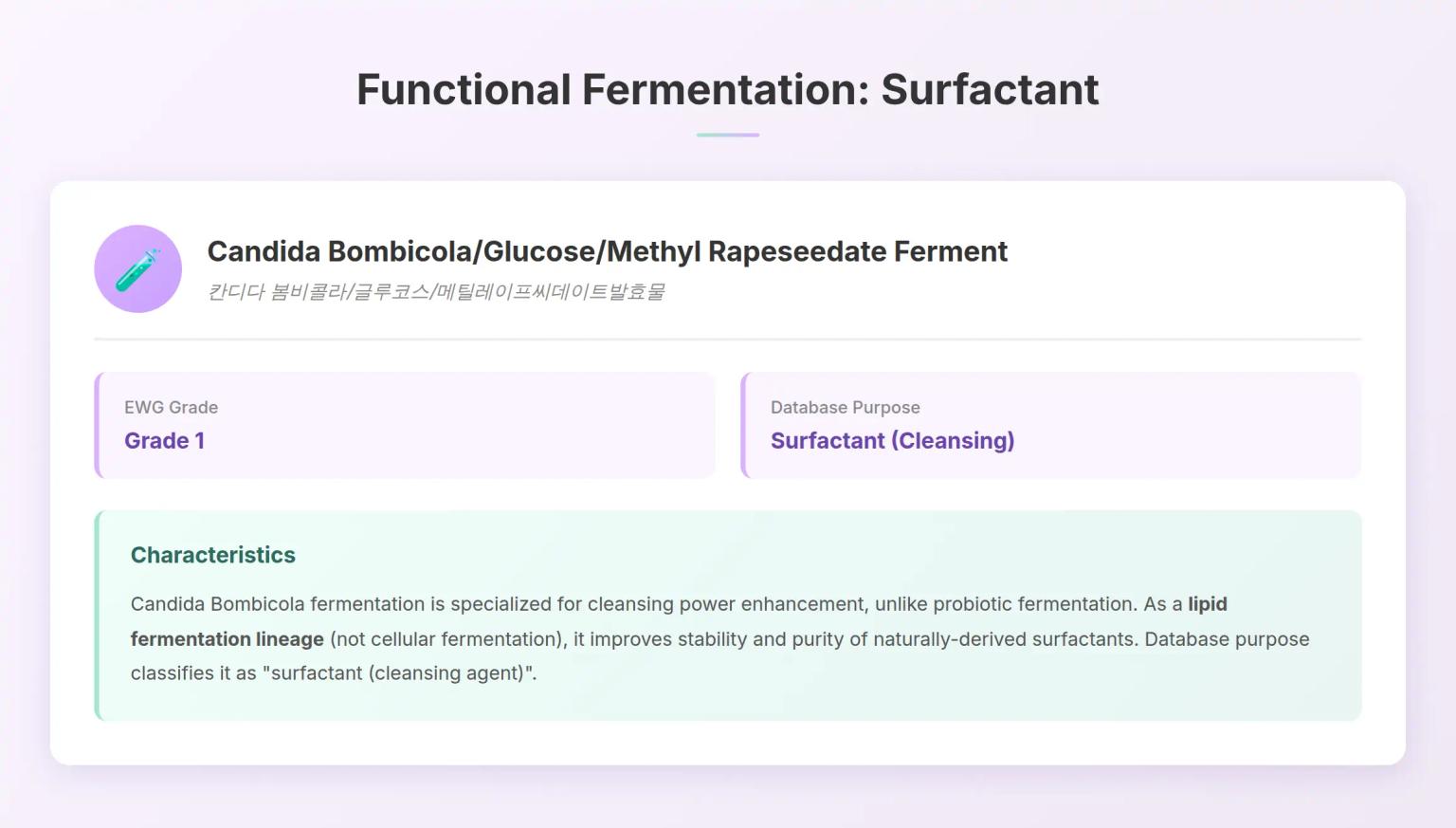
3. Non-Fermentation Ingredient Strategy🔗
Tea Tree Cleansing Foam🔗
Tea Tree Cleansing Foam excludes fermentation ingredients. Total 30 ingredients, 0 fermentation ingredients.
4. 6-Type Oil Blend (Excluding Fragrances)🔗
Pure Cleansing Oil Composition🔗
Dr.Schracl Pure Cleansing Oil uses 6 functional cleansing oils and 3 citrus fragrance oils.
| Oil Name (Korean) | English Name | Purpose |
|---|---|---|
| 카프릴릭/카프릭트라이글리세라이드 | Caprylic/Capric Triglyceride | Solvent, occlusive agent |
| 올리브오일 | Olea Europaea (Olive) Fruit Oil | Skin conditioning, occlusive agent |
| 해바라기씨오일 | Helianthus Annuus (Sunflower) Seed Oil | Skin conditioning, occlusive agent |
| 호호바씨오일 | Simmondsia Chinensis (Jojoba) Seed Oil | Skin conditioning, occlusive agent |
| 마카다미아씨오일 | Macadamia Ternifolia Seed Oil | Skin conditioning, occlusive agent |
| 메도우폼씨오일 | Limnanthes Alba (Meadowfoam) Seed Oil | Occlusive agent (prevents moisture evaporation) |
Citrus Fragrance Oils (3 types):
- Citrus Aurantium Bergamia (Bergamot) Fruit Oil
- Citrus Aurantium Dulcis (Orange) Peel Oil
- Citrus Paradisi (Grapefruit) Peel Oil
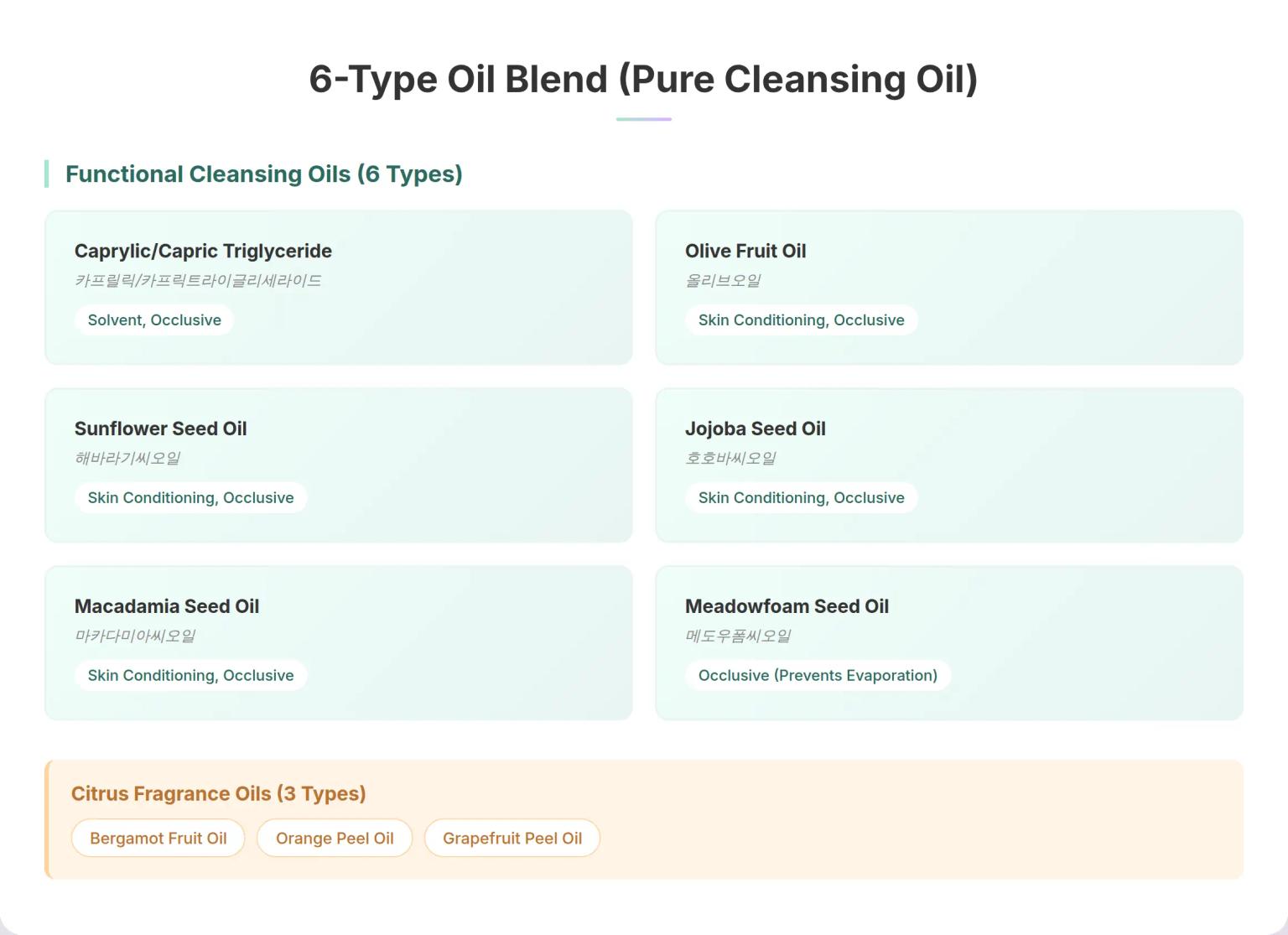
5. Product-Specific Ingredient Strategy Summary🔗
Dr.Schracl's 7 products are categorized into 3 ingredient strategies by purpose:
1. Probiotic Fermentation (Skin Conditioning)
- Strategy A: Pure Cleansing Oil, Night/Morning Enzyme Wash (6 types)
- Strategy B: Pro-Balance Soothing Cleansing Foam (9 types)
2. Functional Fermentation (Surfactant)
- O-Alpha Melting Cleansing Gel, O-Alpha Clearing Cleansing Foam (Candida Bombicola)
3. Non-Fermentation
- Tea Tree Cleansing Foam (0 fermentation ingredients)
Common Feature: All fermentation ingredients are EWG Grade 1.
Frequently Asked Questions🔗
Q. Why do different products use different fermentation ingredients?A. Dr.Schracl employs 3 ingredient strategies by purpose. For skin conditioning purposes, probiotic fermentation (6 or 9 types) is used. For cleansing function, surfactant fermentation (Candida Bombicola) is used. Tea Tree Foam excludes fermentation ingredients entirely.
Q. What's the difference between Lysate and Filtrate?A. Filtrate is the supernatant after filtering out bacterial cells from fermentation broth. Lysate is obtained by physically/chemically breaking down fermentation bacterial cells to extract intracellular components. Dr.Schracl uses both forms in Strategy A.
Q. What's the difference between probiotic fermentation and surfactant fermentation?A. The purpose differs. Probiotic fermentation (Bifida, Lactobacillus, etc.) is classified as "skin conditioning agent" in the database, while Candida Bombicola fermentation is classified as "surfactant (cleansing agent)". Both are fermentation ingredients but serve different functions. In other words, Dr.Schracl's fermentation technology is divided into two axes: 'skin barrier care fermentation' and 'cleansing function enhancement fermentation'.
This analysis was created based on the BeauticsLab database from October 2025.
Related Articles
Discover more insights on similar topics.

Korean Cica Cream Marketing: How 4 Key Ingredients Challenge Premium Pricing
Analysis of Dr. Oracle Curesona Cream (5,000 won) vs The Haruhynai Cica-Aid Cream (23,200 won) reveals how budget Korean cica creams include the same 4 key ingredients as premium products - strategies that redefine value propositions in K-beauty's soothing cream segment.
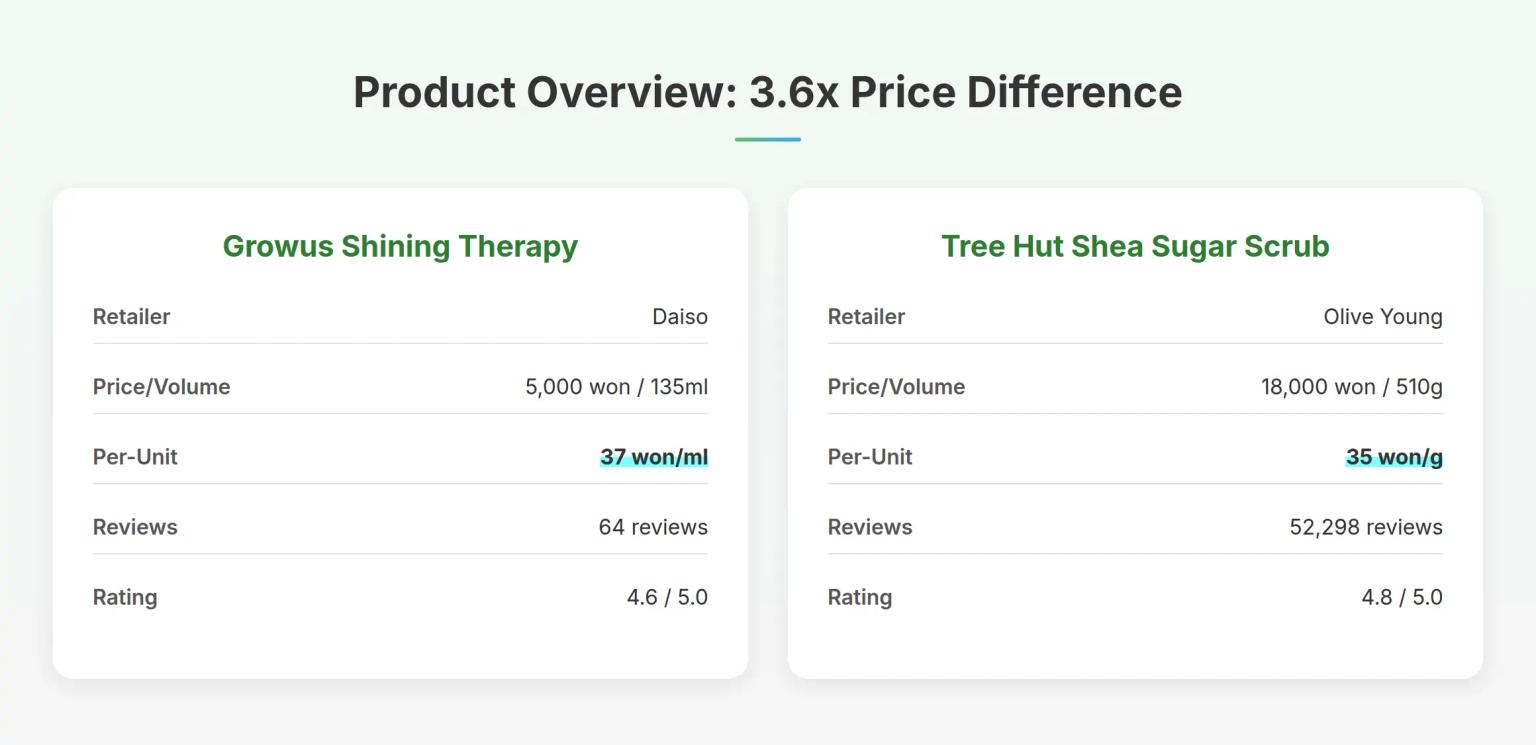
Korean Body Scrub Marketing: How LHA Changes the 5,000 Won Game
Analysis of Growus Shining Therapy Shimmer Body Scrub (5,000 won) vs Tree Hut Shea Sugar Scrub (18,000 won) reveals how Korean body scrub brands use chemical exfoliation ingredients to challenge physical scrub dominance - strategies that redefine value propositions in the budget beauty segment.
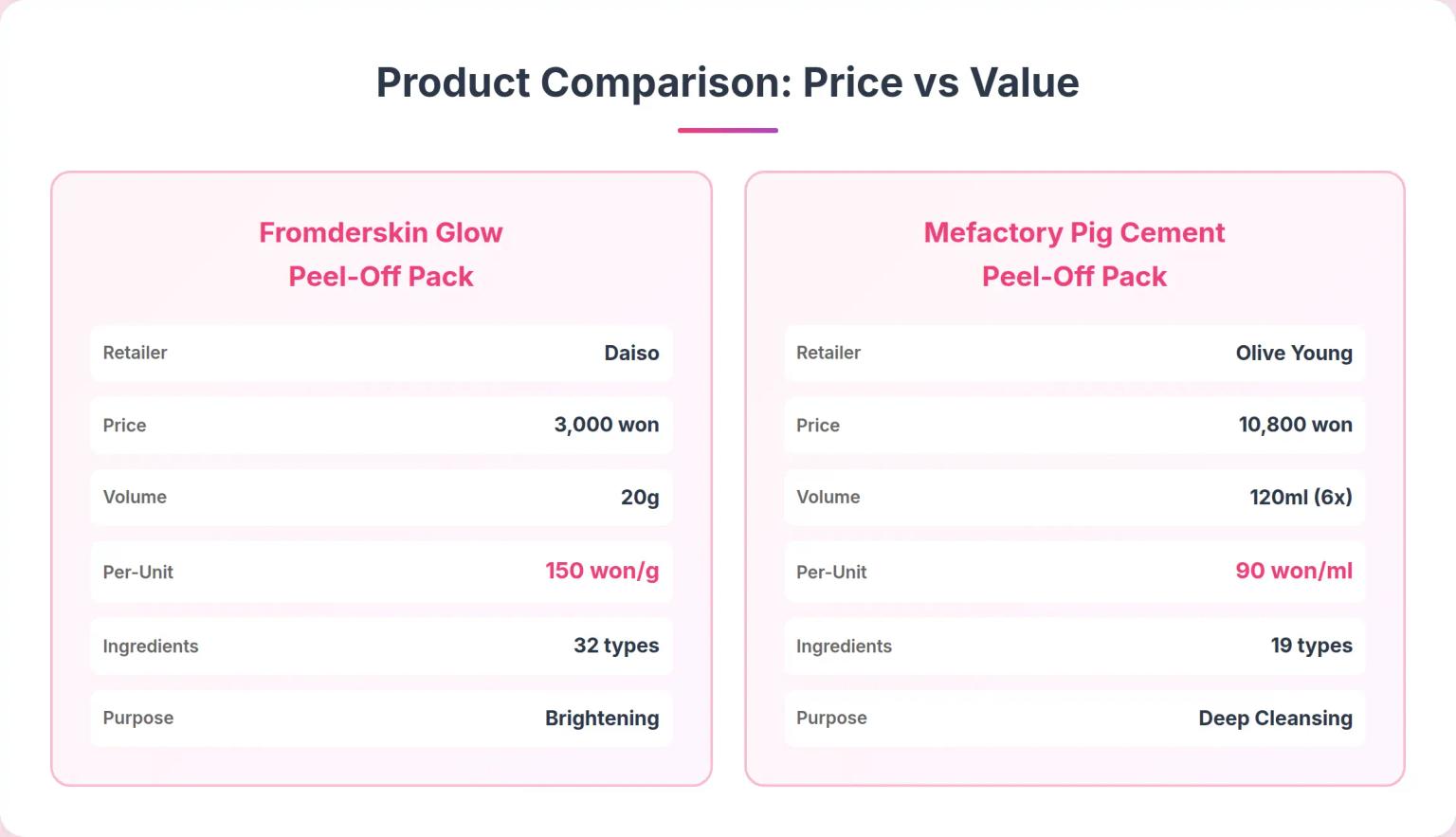
Korean Peel-Off Pack Marketing: Why Price Doesn't Tell the Full Story
Analysis of Fromderskin Glow Peel-Off Pack (3,000 won) vs Mefactory Pig Cement Peel-Off Pack (10,800 won) reveals how Korean skincare brands use ingredient positioning and skin type targeting to create distinct market segments - strategies that challenge conventional price-value assumptions.